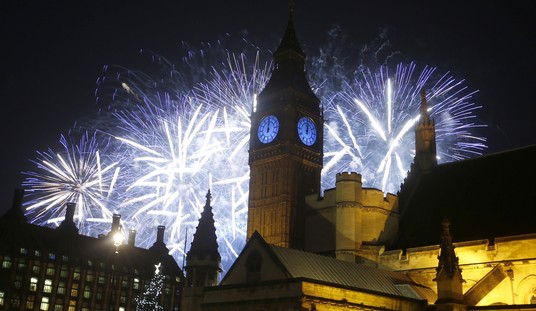After 18 years of a law practice devoted to counseling landowners, home builders and commercial interests affected by the long arm and severe penalties of the Endangered Species Act, I am used to incredulous looks and outraged oaths from clients coming to grips with the Act's incredible burdens on impacted private citizens.
"Are you telling me I can't build my Burger King because a Delhi Sands flower-loving fly that has never been seen and is above ground only a few days a year might be near-by?"
"I can't build a connector road because the noise from construction might damage the hearing of the Stephens' kangaroo rat thus impairing its reproduction?"
"All construction in San Diego involving impacts to road ruts which might contain Vernal Pool Fairy Shrimp is enjoined? All construction?"
Yes, yes, and yes. The list of situations in which the ESA has stopped otherwise legal and fully permitted projects from proceeding is extraordinarily long and getting longer. With Wednesday's decision to list the polar bear as "threatened" the burden on the American economy brought about by the ESA grew exponentially.
I have written here and here on the polar bear controversy. Those columns delineated how the advocates of the polar bear listing planned on using the bear to impose vast new controls on the emissions of greenhouse gases across the United States. When Secretary of the Interior Dirk Kempthorne announced the listing, he also made a bold statement that the new status of the polar bear would not lead to such consequences.
To which the environmental activists replied immediately: "Says who?" The law is the law, they correctly noted, and it cannot be cabined by "guidance" issued by the executive branch. Here's one example of the reality of the listing's aftermath from the pages of USA Today:
Recommended
Kassie Siegel, a lawyer with the Center for Biological Diversity, said the group does not accept Kempthorne's view.
The act requires federal agencies to take steps to reduce or eliminate those impacts on threatened species, she said. "There is no exemption for greenhouse gas emissions."
If the government fails to address global warming, "we can and will go to court to enforce the law," she said.
The industries most likely to be pummeled by the polar bear are energy production, aggregates extraction, transportation, and commercial building because each can be shown quite easily to result in increased emissions of greenhouse gases and each routinely requires federal permits to go about some aspect of their business. (The coal industry may be target number one, followed by oil drilling in the lower 48.)
The Act operates simply. Once an animal is listed, it becomes a felony to harm or harass it without the permission of the feds.
Harm or harassment has been defined to include destruction or impairment of the habitat the species actually occupies. (Some more radical views argue that harm to habitat that could be occupied in the future should also be a felony under the Act, but that view has not yet been upheld by a court of appeals.)
Because the polar bear has been listed as threatened due to alleged deterioration of its ice habitat, and because the alleged loss of the ice habitat has occurred because of global warming caused at least in part by the emission of greenhouse gases, environmental activists will argue that all emissions of greenhouse gases that flow as a consequence of the grant of a federal permit of any sort are now subject to review under the ESA and, crucially, that those permits cannot be issued unless and until the United States Fish & Wildlife Service reviews and approves of the requested permit under Section 7 of the ESA, a process which takes at a minimum months and which can cost millions of dollars even if it is successful.
Because of the generous "citizen standing" provisions of the ESA, expect dozens of "60-day" letters to begin to arrive in the offices of Secretary Kempthorne very soon, announcing that unless the Department and the Service act to invoke Section 7 vis-a-vis this or that federal permit, a lawsuit will be filed to force compliance. Expect most of those suits to be filed in the Ninth Circuit, where the appeals court has been very expansive in applying the ESA.
What ought the industries likely to be burdened by this legal blitzkrieg from the left to do?
First, industry lawyers must intervene in every polar bear suit brought by every environmental group. Trade associations must file and refile FOIA requests for all 60-day notices, and they or their members must force their way into every courtroom where the reach of the polar bear listing is argued and a decision rendered. Incredibly, not one of the industries likely to be impacted by the listing intervened in the court proceeding that imposed a deadline on Secretary Kempthorne. Not one.
Some will no doubt urge that the listing itself be challenged, but not only will proceeding that takes years, it is likely to be unsuccessful because the courts rightly defer to the exercise of scientific discretion by the agencies charged with protecting the species protected by the Act. It is not a hopeless effort, but it is also not likely to succeed.
The key will be to cabin the reach of the polar bear listing's impact by pushing for court decisions on the limits of where Section 7 reaches, and to do so in federal circuits much more cautious about the ESA's intent when passed by Congress and signed by Richard Nixon. In addition to the obvious constitutional arguments about whether the Interstate Commerce power was ever intended to support such far reaching claims of federal regulatory power, and statutory construction arguments on whether the ESA was ever intended to reach future habitat destruction based on predictive models (as well as the obligatory non-delegation arguments which are highly unlikely to be persuasive) the key will be to force the courts to early on confront the limits of causation when it comes to harm to the ice that the act can support. Courts must establish that it is absurd for the federal government to ever argue that project-by-project review of greenhouse gas emissions is required by the ESA or could in any way prevent ice formation or destruction.
Test cases should be brought by industry that argue that various federal permits --import/export permits, private jet landing permits, conservation banking permits-- all have greenhouse gas impacts, no matter how small, and thus that they must be subject to Section 7 review. Courts ought to be forced to the far reaches of Section 7 immediately rather than over years so that the agencies do not develop a practice of automatically referring for review just the projects they want to stop. It is vital that affected industries not trust the executive branch to practice restraint or to push back against the most ambitious of the claims of environmental activist plaintiffs.
One caller to my radio show yesterday suggested targeting imports from China entering via federally-regulated ports as an opportunity to argue that the PRC is the real culprit behind skyrocketing global emissions.
Another urged a focus on the private jets that Al Gore and other activists are so fond of using to carry their climate change gospel around the globe.
An e-mailer asked whether the new Yankee Stadium is depending upon federal money or federal permits in any way as surely the traffic to and from the ball games will punch up the plight of the polar bear.
While there will be a long list of targets for test cases, the key is that industry not react to suits brought by the very accomplished lawyers of the left but that they force the tempo and choses at least some of the battlegrounds.
Swarming the courts has long been a tactic of the left, but private sector firms and sectors threatened by the threatened polar bears need to do more than sit back and wait for bills to come do and projects to be canceled. Congress under Speaker Pelosi and Majority Leader Reid will not be offering legislative relief no matter how absurd the consequences of the listing. The best hope to cut-off the imposition of Kyoto through the rulings of the U.S. Fish & Wildlife Service is through the federal courts, and the time to act is now.

























Join the conversation as a VIP Member